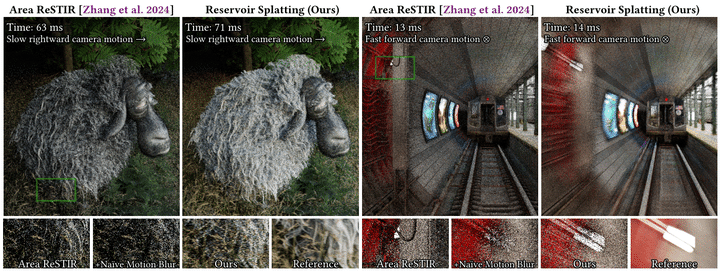Reservoir Splatting for Temporal Path Resampling and Motion Blur

Abstract
Recent extensions to spatiotemporal path reuse, or ReSTIR, improve rendering efficiency in the presence of high-frequency content by augmenting path reservoirs to represent contributions over full pixel footprints. Still, if historical paths fail to contribute to future frames, these benefits disappear. Prior ReSTIR work backprojects to the prior frame to identify paths for reuse. Backprojection can fail to find relevant paths for many reasons, including moving cameras or subpixel geometry with differing motion. We introduce reservoir splatting to reduce these failures. Splatting forward-projects the primary hits of prior-frame paths. Unlike backprojection, forward-projected path samples fall into the current-frame pixel relevant to their exact primary hits, making successful reuse more likely. This also enables motion blur for ReSTIR, by splatting at multiple time steps, and supports depth of field without the specialized shift maps needed previously.Beyond enabling motion blur, splatting improves resampling quality over Zhang et al.’s [2024] Area ReSTIR at up to 10 % lower cost. To improve robustness, we show how to MIS splatted and backprojected samples to help every current-frame pixel get at least one historical path proposed for reuse.